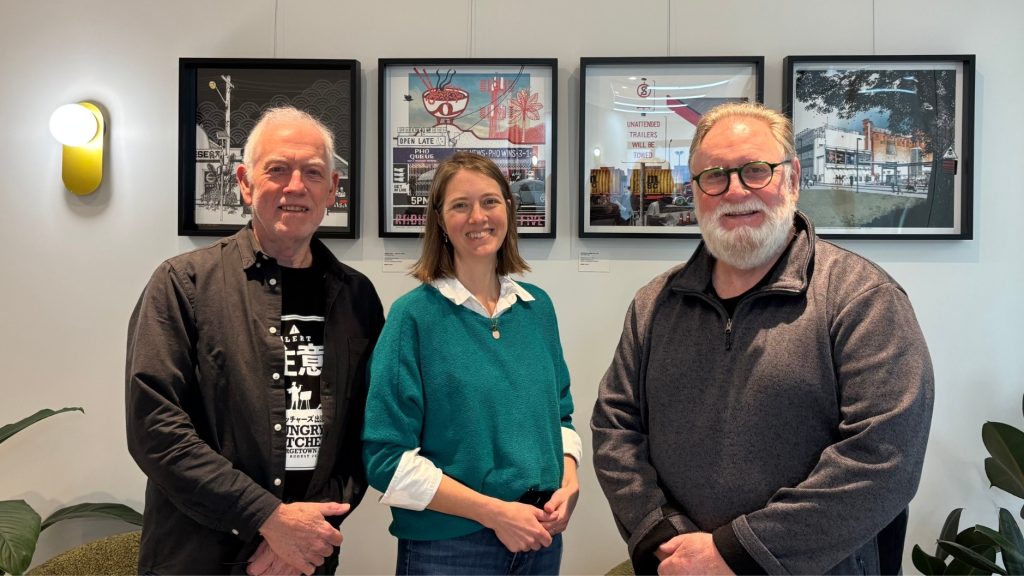Register for our free webinar – Personal brand essentials for scaleup leaders.
In the world of venture capital and angel investing, the adage “investors invest in people, not just companies” holds a lot of truth.
Investors are not just looking for a groundbreaking business idea; they are looking for a solid leader who can navigate the tumultuous journey from startup to scaleup and beyond.
Most founders have an extraordinary vision. But they need to convince investors they also have the leadership, technical skillset and resilience to see it through.
Building your personal brand
Before you even get a chance to meet with potential investors, your personal brand can make a difference. Investors invest in people who have demonstrated their ability to lead and innovate.
In her work as an investor with impact VC fund Giant Leap, Katarina Throssell reviews pitch decks from 2,000 founders every year. If she is impressed with the deck, she goes on to check a founder’s LinkedIn profile and company website. And she does an initial Google search on the founder.
“It always helps when founders can get out there and make a name for themself,” Throssell said.
“Sometimes you’ll see a deck come through and you might not have met the founder, but you realise you’ve seen them on a pitch night, or on a panel, or you’ve seen them posting on LinkedIn. That stuff definitely helps because it shows founder hustle and the ability to sell the mission.
“It’s a positive indicator of how you’re going to be able to sell to your customers. Almost all early-stage startups are based on founder-led sales. So that’s why it’s relevant.”
Your LinkedIn profile
You simply cannot afford to ignore your personal LinkedIn profile, according to Bespoken Agency Managing Director Sarah Morgan.
“When someone Googles you – and investors definitely will ‘social proof’ you – your LinkedIn profile is often the first thing they find,” Morgan said.
“You should make it clear what you stand for. LinkedIn provides such a strong platform to position yourself, your team and your expertise. It helps you connect directly to future staff, future investors and future partners or clients.”
Here are Morgan’s three top tips for knocking your profile into shape:
1. Professional photo
Your profile photo is the first impression you make. Ensure it is high-quality and reflects the image you want to project. If your photo is 10 years old, update it. If it was taken on a phone and is grainy, update it.
2. Compelling headline, ‘About’ and ‘Experience’
Your headline is not just your job title. With care not to be cheesy, this line (which sits under your photo) should encapsulate what you’re about. Think of it as your personal tagline. For example, reference the impact of your work, or your industry leadership.
Likewise, your ‘About’ section should tell your story. It is an executive summary, written in the first person, of your career to date, who you want to connect with and your areas of expertise. It should highlight your achievements, your vision and what drives you.
Your ‘Experience’ section should include descriptions of your former employer, and your role in the organisation, what you achieved in this position in a way that demonstrates your expertise.
3. Plan, engage and make it worthwhile
Editing and cleaning up your LinkedIn profile are just the first steps. Now your page is ready, start engaging and connecting. Don’t just sit on the sidelines! Like and comment on other people’s posts, contribute to meaningful conversations, and post about your three key expert topics.
Media coverage
When investors see you have been featured in reputable media platforms, it signals you are a leader in your industry.
For example, being interviewed by a well-known business magazine or having an opinion piece published in a respected industry journal can make a strong impression.
Media coverage builds trust and authority. It also assists with social proof, when a potential investor Googles you.
“All of these things help. By itself, [media] is not going to be enough to get [an investor] over the line as a singular data point. But when all the data points start adding up it gives you a deeper picture of the person and their professional brand,” Throssell said.
Industry presence
A founder’s presence at industry events, particularly in speaking roles at conferences, is another crucial aspect of building a personal brand.
Speaking at events showcases your expertise and positions you as a leader in your field. It also leaves a digital trail that investors can follow, providing them with evidence of your influence. Share a photo and some comments about the event on your LinkedIn profile, as a minimum. You will probably find that you are mentioned in the organiser’s channels – website and social media – as well.
Participating in panel discussions and even just attending networking events can also contribute to a strong industry presence.
Where to from here?
While a compelling business idea is essential, investors are ultimately backing the people who will bring that idea to life.
Demonstrating your competency, drive and resilience is crucial for attracting investment even before you step foot in the investor’s door.
Giant Leap is an Australian VC fund backing mission driven founders harnessing technology and innovation to reimagine industries and create transformational change in climate, health and empowerment & education.
This is the fourth article in our startup / scaleup series. Further reading:
Four marketing and PR essentials before a cap raise
Climate tech: scaling and finding investment internationally
Register for our free webinar – Personal brand essentials for scaleup leaders.
Pictured: Ashley Baxter, founder of Monty Compost Co. Photo credit: Gabriel Veit.



